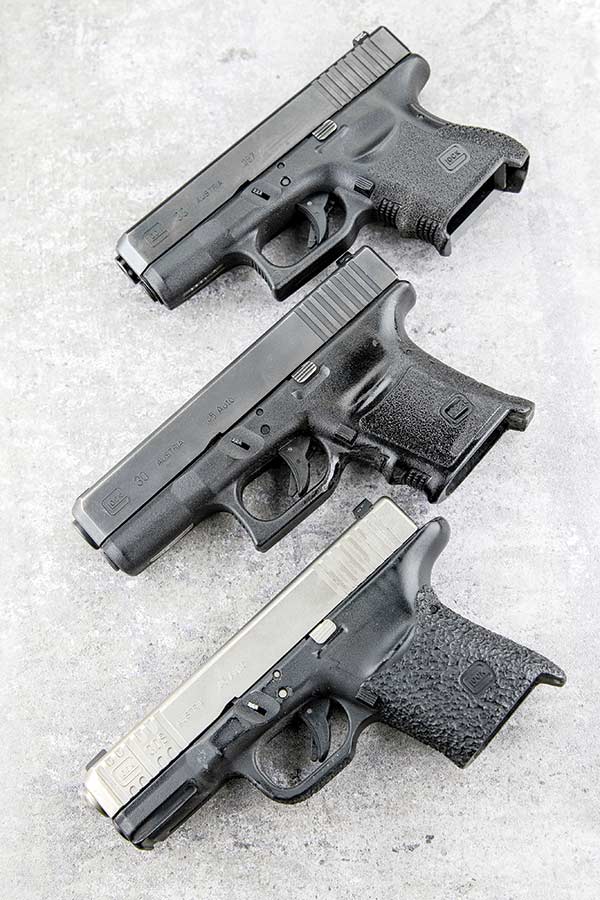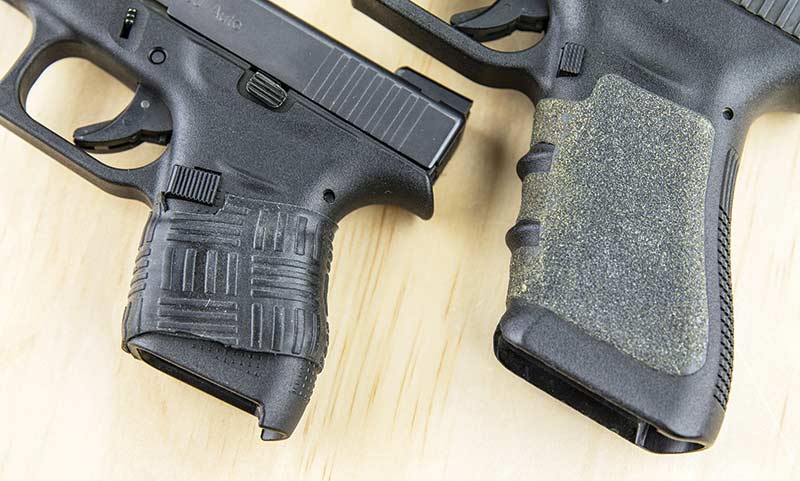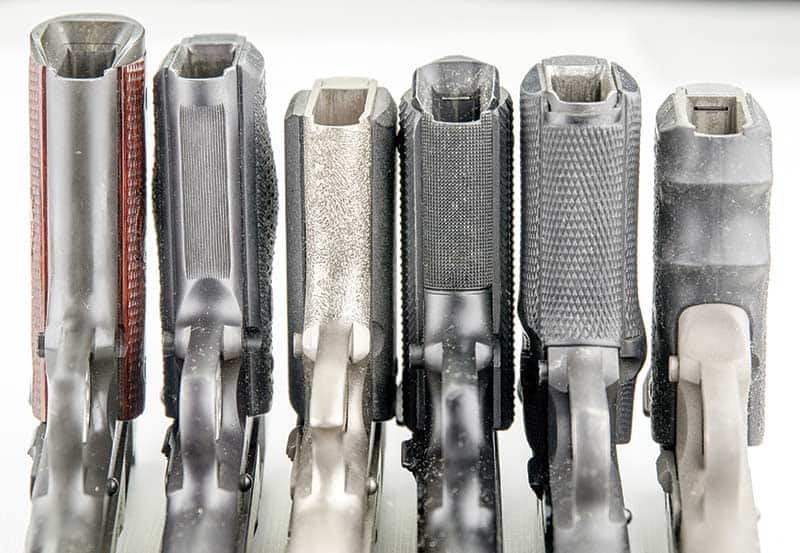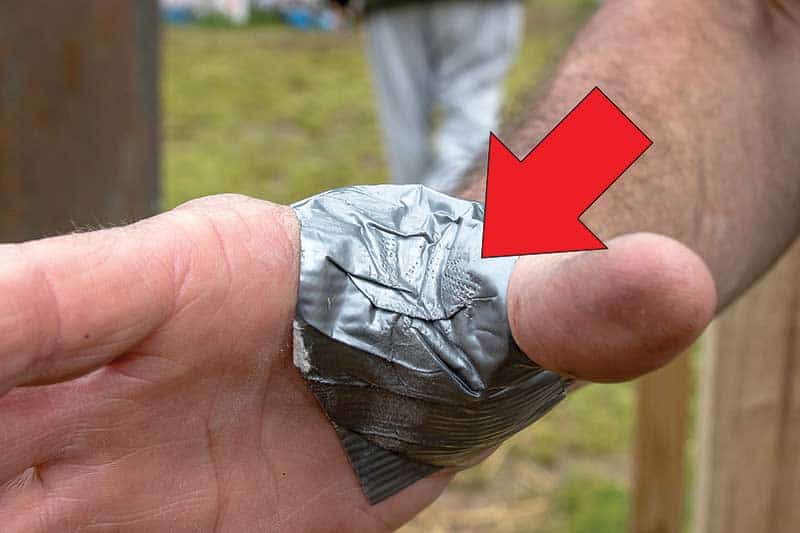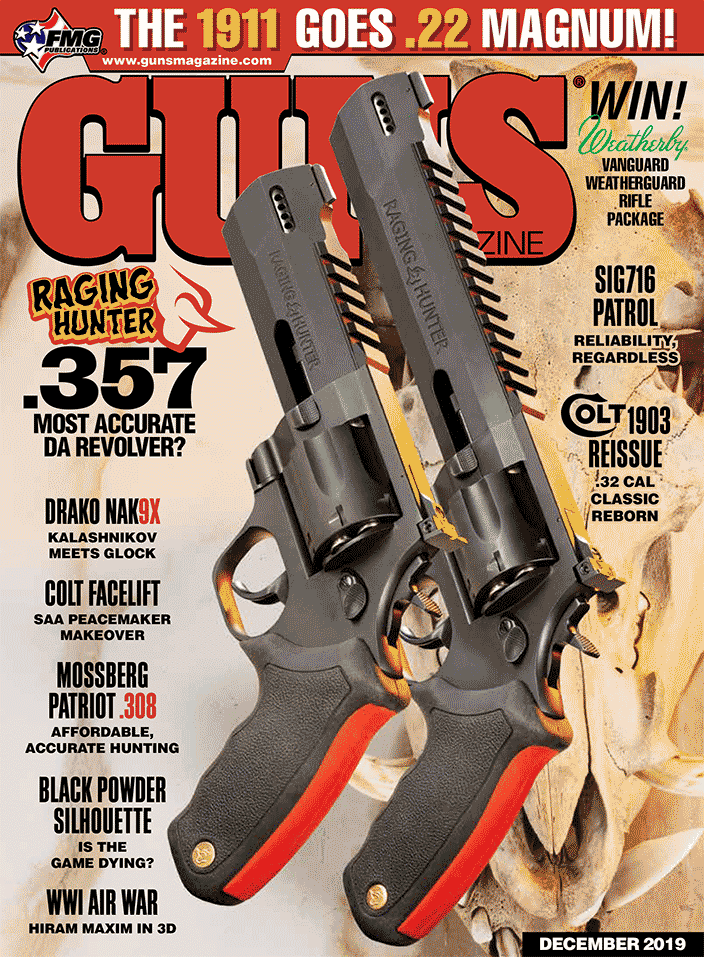The Non-Slip Grip
“Don’t Move!” shouldn’t just apply to bad guys
Every year I compete in Richard Davis’ seminal bowling pin shoot at Central Lake, Michigan (pinshoot.com). This year I saw some things to inspire this particular column.
Those big wooden tenpins are heavy and need some oomph to blow them three feet back off their table. Hence, the main guns are .45s, full power 10mms, and assorted Magnums. The fastest times win, and the significant recoil at speed wants to move the gun within your grasp. Having to regrip between shots slows you down while not regripping properly will impair accuracy. The software fix is to find out the exact optimum grasp on the handgun then apply a really hard grip with both hands.
The hardware fix generally involves changing the grip configuration or surface in some way.
Metal-Frame Autoloaders
First, the grip shouldn’t have anything to bite the hand when shot, or make it want to be somewhere else. Beavertail grip safeties on 1911s and rounded rear slide edges and beavertails on Walther PP series pistols are good examples of hardware correction for this.
The harder the pistol “kicks,” the more it wants to twist in the shooter’s hand. I’ve seen horizontal striations on grip frames, which won’t do much; vertical grooves, which help more; and stippling and checkering, which help most of all. The more lines per inch of checkering, the less abrasive it is to your hands in long-term shooting. For a match, I like 20 LPI. If I’ll be shooting .45s a lot more, such as during an intensive training course, 25 LPI is easier on my fingers. This is what I specified on my signature model Ed Brown revolver because it was a carry gun.
Stippling as opposed to checkering? The styles vary. Personally, the scalloped designs are easy on my hands while the toughest was Jim Clark’s signature “tiger tooth” job, which had little projections all down the front. It bit rock solid into the hand and I won several matches with it but “bit” was the operative term as far as comfort. I was glad I had it on my light-kicking long-slide Clark Colt chambered for mild .38 wadcutters.
Another route is “rubber” grips, like the Hogue and Pachmayr models available. You can get them with just the side panels providing a tacky surface for the palms or with a frontal wrap-around. The latter configuration will make the grip feel bigger, especially in the finger-grooved style, and will feel as if you have “less hand around the gun” — but will certainly reduce slippage.
G10 and Micarta grip panels, such as those by VZ Grips give wonderful traction, but some sensitive hands find them too rough; ditto sensitive bellies when carrying concealed against bare skin.
“The recoil chewed the hell out of his hand, drawing blood.”
Polymer Frame Pistols
One option is factory-provided stippling, the most aggressive of which was GLOCK’s RTF2 series and Smith & Wesson’s M&P 2.0 pistols. The RTF2 was discontinued because the stippling was wearing through police uniform jackets. It’s subjective, but I really like the stippling on the current Gen5 GLOCKs. Want more? Several custom gunsmiths can make them as rough (or not) as you want plus there’s always the “GLOCK sock,” which started out as bicycle tire tube around the grip and soon morphed into several purpose-built styles and brands. More aesthetically pleasing are stick-on panels such as Decal Grip and Talon Grips.
Revolvers
At the Michigan Pin Shoot one of the top shooters, Pat Sweeney, shot a lot with heavy-loaded revolvers, one of which had been stippled aggressively all the way up the backstrap. The recoil chewed the hell out of his hand, drawing blood. The web of the hand is a lot more tender than the palmar surface on most of us. The traditional answer is rubber grips by the makers mentioned above but the style putting some cushion between web of hand and backstrap also increases trigger reach and can make it a bit harder to get leverage on a double-action trigger.
If your choice is S&W, don’t neglect their own X-Frame grips, designed to absorb the kick from .460 and .500 monster Magnums. If the problem is just grip shift and no recoil cushioning is needed, one “old-school” ugly-but-effective option is wrapping electrical friction tape around the revolver’s grips.

Get More Carry Options content!
Sign up for the newsletter here:
